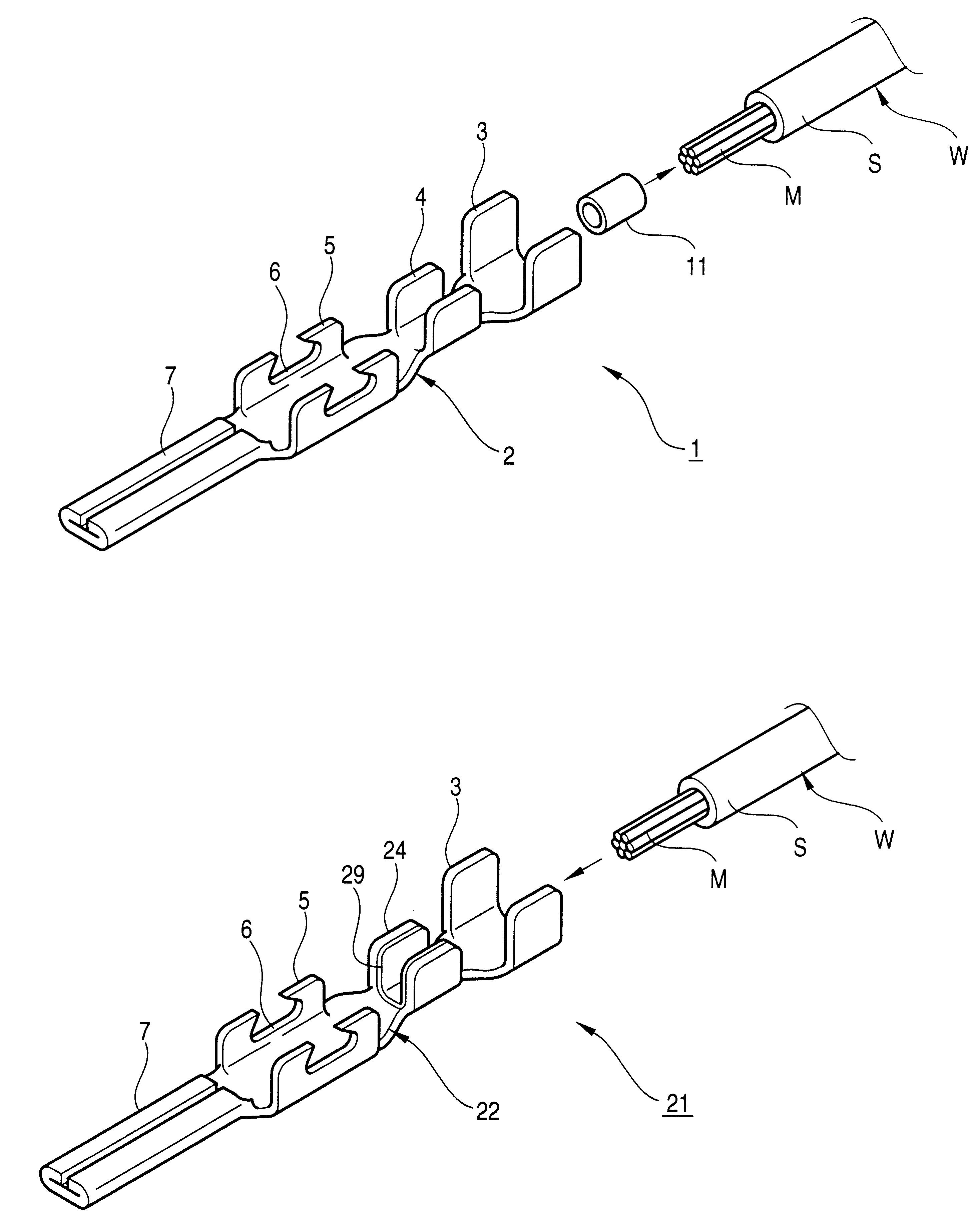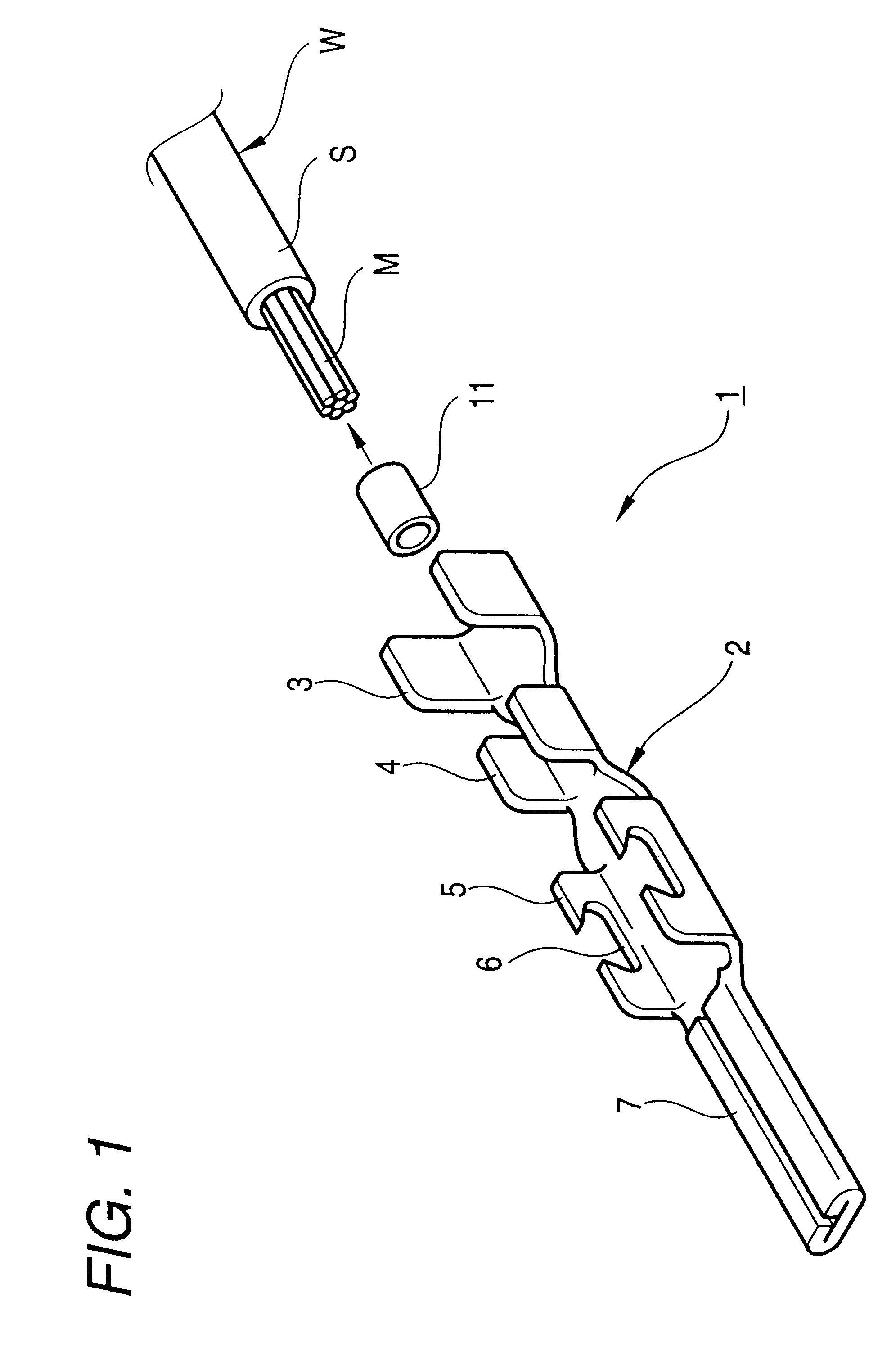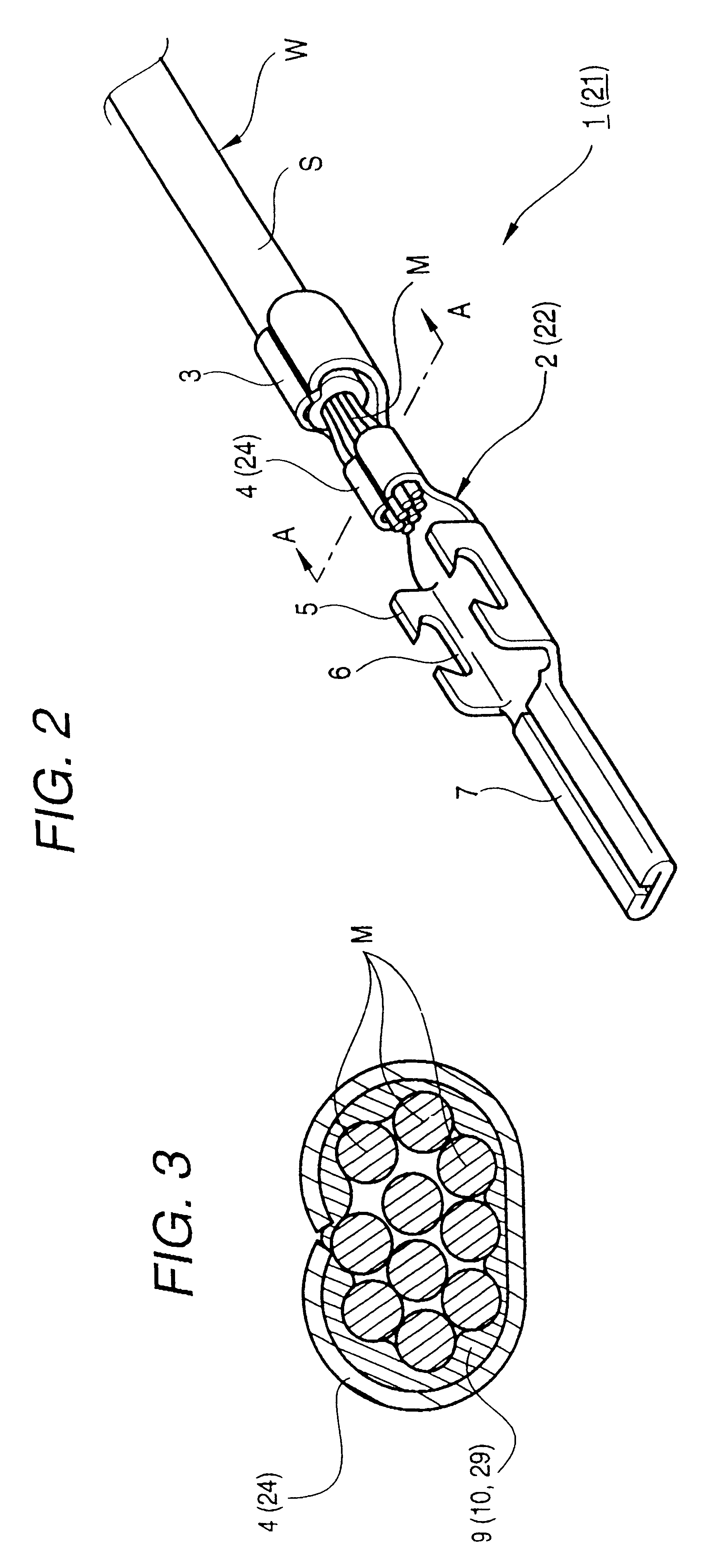Method of and structure for connecting electric wire and connecting terminal
a technology of connecting terminal and electric wire, which is applied in the direction of connection contact material, connection effected by permanent deformation, line/current collector details, etc., can solve the problems of reducing productivity, difficult to integrate soldering operation into continuous automation lines, and corroding of core wire portions of wir
- Summary
- Abstract
- Description
- Claims
- Application Information
AI Technical Summary
Problems solved by technology
Method used
Image
Examples
first embodiment
As shown in FIG. 1, a structure 1 for connecting an electric wire and a connecting terminal in accordance with the invention is a structure for caulking a crimp terminal in which core wire portions M exposed by stripping off an end portion of a sheathed wire W by a predetermined length, the core wire portion M are caulked by a conductor caulking portion 4 in the rear of a crimp terminal 2 and is connected. A tubular ring 9 is formed of a ductile metal, i.e., a soft metal having higher ductility than the material of the crimp terminal 2, e.g., gold, silver, lead, zinc, aluminum or the like. The tubular ring is interposed between an inner surface of the conductor caulking portion 4 and the core wire portions M in a state of being extended in the axial direction from the center of an end of the sheathed wire W.
More specifically, the core wire portions M are general a bundle of a plurality of slender copper wires, and the crimp terminal 2 is formed by press working by stamping out a pre...
third embodiment
Further, in the third embodiment, after the heating test the resistance of the crimped portion was even lower. This attributable to the fact that since a phenolic resin was used as the liquefied resin, the resistance of the conductor became small due to the reducing action of formaldehyde.
It should be noted that the invention is not limited to the above-described embodiments, and may be implemented by other embodiments by making appropriate modifications. For example, although both the crimp terminals 2 and 32 in the above-described embodiments were male terminals, the invention is applicable to female terminals as well.
In addition, although a description has been given of the tubular ring 9 in the first embodiment, the tubular ring 9 need not be a ring, and the invention is applicable to a semitubular shape formed by longitudinally splitting a tube along its axial direction.
As described above, in accordance with the method of connecting an electric wire and a connecting terminal ac...
PUM
 Login to View More
Login to View More Abstract
Description
Claims
Application Information
 Login to View More
Login to View More - R&D
- Intellectual Property
- Life Sciences
- Materials
- Tech Scout
- Unparalleled Data Quality
- Higher Quality Content
- 60% Fewer Hallucinations
Browse by: Latest US Patents, China's latest patents, Technical Efficacy Thesaurus, Application Domain, Technology Topic, Popular Technical Reports.
© 2025 PatSnap. All rights reserved.Legal|Privacy policy|Modern Slavery Act Transparency Statement|Sitemap|About US| Contact US: help@patsnap.com



